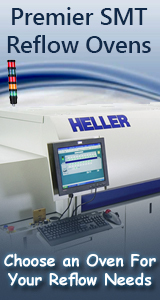Thanks to everyone for their participation and advice. This is what i got from ASM support:
LED's are used more and more without an external body (with and without lens dome). The LED nozzle contact area is than an overall soft silicone surface.
Influencing parameters and their variation onto stickiness: the soft silicone mixture of the LED types respectively of the manufacturing lot variation the Curing of the LED types respectively of the manufacturing lot variation a material mix up with residues in the soft silicone packaging barrier layers of thin materials or material mixtures All that doesn't allow one excellent solution for all only a best state of anti- stickiness is to achievable.
To achieve the lowermost stickiness / adhesion for the placement moment we: optimize a polyurethane (PU) –base mixture (Shore hardness 90 A) with special additives. reduced nozzle–LED–contact area (no contact to lens surface inside the nozzle / plane LED's possibly placed with PU-Melf nozzle / other special surface geometries) use only rough surfaces in contact area. have additional vent hole(s) to reduce vacuum holding force on LED contact surface. For air kiss placement use 150mbar or increase this to max. 255 mbar.
To achieve the lowermost stickiness / adhesion for the placement moment we suggest you: to gain for the shortest possible residence time of the LED on the nozzle. (by: placement force standard 2N / No waiting time between pickup & placing(also not for 2nd gantry of one Placement area) / No acceleration reduction /no special profile / no special mode in vision / no step mode / No safety mode / If necessary use only half of the available segment from head (example: 6 from 12segments) / (also not with other different nozzle types) Temperature in production surrounding of that LED's as low as possible. Mean: best for X-Feeders single position on the feeder table (no neighbor feeder heats up pickup area and the air flow avoid temperature hold up inside the machine.) Clean the PU-nozzle tips from residues. Residues increasing the stickiness after a placement period. Use Soap water (dish liquid) to remove soft silicone from PU nozzle tip. The Solder paste depots should be as large and thick as recommended from LED manufacturer. Possibly the operator has to remove LEDs from nozzle after an extended residence time (long lasting machine stop after pickup increase the sticking force on the Nozzle surface). It might be helpful to place not latest manufacturing batches – with time the silicone loose stickiness. It also helpful if you have the chance to place with the more `sensitive´ CP 20 plus (4/6Xxx) Cp20plus plus(4/6Xxx) placement heads.
Miscellaneous: Set X-feed modules to slow mode improves pickup situation for LEDs with 'oversized lens' (e.g. lens 2.0mm on 1.6x1.6mm footprint) Cree Tape pocket in the past - XTE – HV 3,7mm square with rounded edges (barreled pocket with R=2.2mm) (see XLamp XTE Datasheet page 15) for a better access to LED's with round nozzles.
Feedback especially 12mmS-Feeder: for a reliable pickup rate respectively due to the very high lenses in the tape pocket, deactivate the shutter of the 12mm S-Feeder (through cover foil in pickup window & not at removal edge) or order a special Pickup window for 12mm S-Feeder without shutter "176188" (e.g. useable for Rebel DS/ES and Cree XP/XT.)
May be this will be useful for siplace users and not only.
reply »
![]() Hello everyone,
We're currently experiencing an issue with ...
- Nov 18, 2024
by
Dima
Hello everyone,
We're currently experiencing an issue with ...
- Nov 18, 2024
by
Dima
![]()
![]()
![]() Can you repackage them using tape & reel? Add the maskin...
- Nov 18, 2024
by
Thomas
Can you repackage them using tape & reel? Add the maskin...
- Nov 18, 2024
by
Thomas
![]()
![]()
![]() Since you are using Siplace X series equipment, have you che...
- Nov 19, 2024
by
Auriga2001
Since you are using Siplace X series equipment, have you che...
- Nov 19, 2024
by
Auriga2001
![]()
![]()
![]() One option is to put the coil in the refrigerator (tried it ...
- Nov 19, 2024
by
Suum
One option is to put the coil in the refrigerator (tried it ...
- Nov 19, 2024
by
Suum
![]()
![]()
![]() I have the pleasure of dealing with LED placements daily wit...
- Nov 19, 2024
by
Carl_P
I have the pleasure of dealing with LED placements daily wit...
- Nov 19, 2024
by
Carl_P
![]()
![]()
![]() Thanks to everyone for their participation
and advice.
This...
- Nov 20, 2024
by
Dima
Thanks to everyone for their participation
and advice.
This...
- Nov 20, 2024
by
Dima
![]()
![]()
![]() There are one more try on silicone surface LEDs. Use rotated...
- Nov 20, 2024
by
Kristof_K
There are one more try on silicone surface LEDs. Use rotated...
- Nov 20, 2024
by
Kristof_K
![]()






